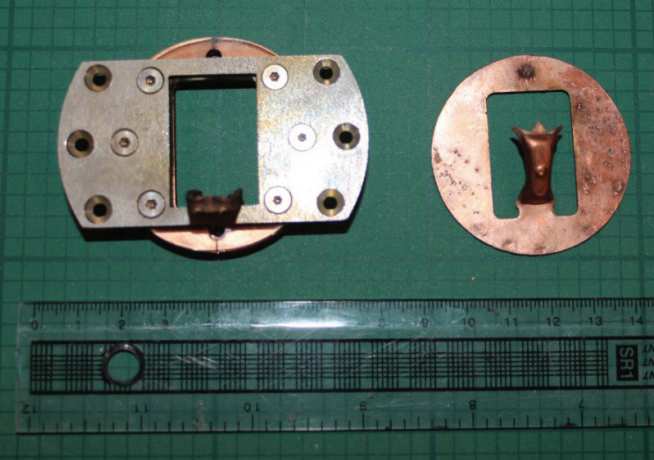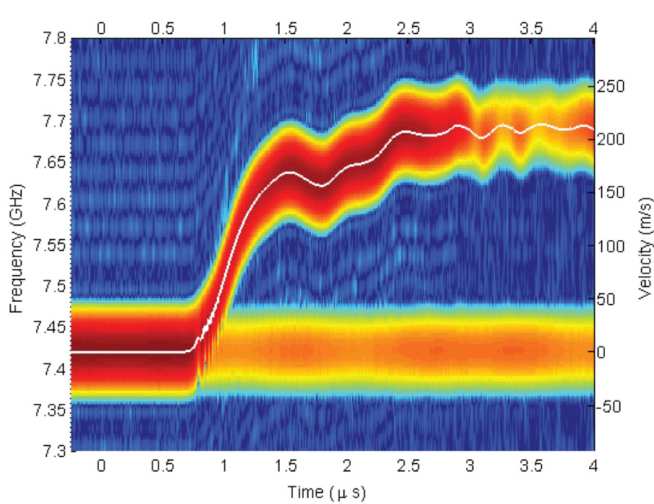Isentropic loading
MACH Pulsed Power Platform

MACH is a 2MA, ~400ns risetime pulsed power facility that is being used to explore isentropic compression techniques at the ISP. Utilising new pulsed power technology, the system is designed to be compact and fast to turn around whilst requiring no noxious gases or oil to provide insulation.
Throughout Autumn and Winter 2014 commissioning experiments were performed on the MACH facility. The experiments included several new target designs to help ensure uniformity of loading and improve ease of probing; along with the use of insulating layers between the targets to prevent any break downs.
Working with Guiji Wang – an academic visitor from the Institute of Fluid Physics, China– the use of cheap mass produced targets was explored, along with 3D printed diagnostic holders. ‘Core’ diagnostics of 4 channels of 3rd generation Het-V were established, and mounted permanently within the laboratory. The current monitors on each bank of MACHs capacitors were also improved and calibrated, whilst connections to the capacitors and charging resistors were strengthened.
In other experiments, the use of ‘long range’ Het-V has been examined. Here multiple Het-V probes, each mounted in its own kinematic, are telescoped and the image relayed to target. The use of the telescope enables very close spacing of the Het-V channels (~mm separation on target) whilst maintaining ease of use and good signal recovery. The system also gives good stand-off between the probes and target – it is hoped that in future experiments only a sacrificial mirror will be destroyed by the targets, rather than multiple expensive probes.

A remote firing system based on Labview has now been established in the extreme physics laboratory, enabling all aspects of safety and charging of the MACH generator to be completed from the control and data area in the upper part of the lab. Over spring 2015 a new, advanced laser safety system will be trialled as two channels of line VISAR are added to the core diagnostics for use in further experiments.
Figure 41: MACH stripline support structure (left) and target plates (right) after shot. The target plate also shows the impact point from striking the Het-V probe.
Figure 42: Velocity of mm thick copper target in MACH stripline (baseline of 5750ms-1) due to 3rd generation Het-V.
Further Information
Lead Academic: Dr Simon Bland (email)
Additional Sponsorship: EPSRC
Location
Blackett Laboratory
Department of Physics
Imperial College London


